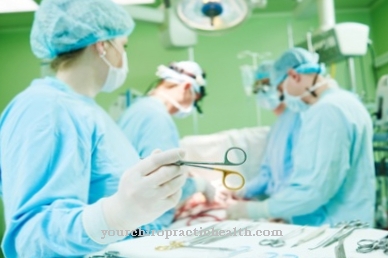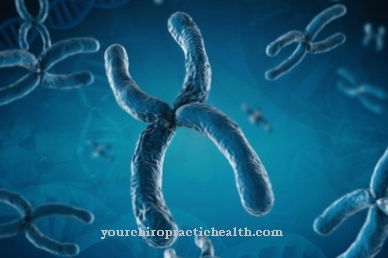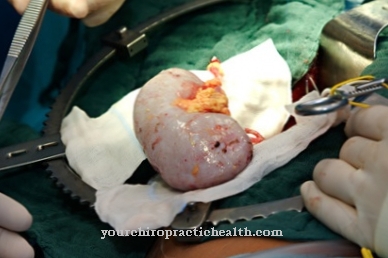Used dentistry Articulatorsto hold plaster models of the upper and lower jaw. This dental technical aid simulates the function of the human temporomandibular joint. Dental technicians produce plaster models of the rows of upper and lower teeth and mount them in the articulator in occlusion.
What is the articulator?

Dental technicians use articulators to make individual dentures for their patients. The dental technician fixes the plaster models of the upper and lower jaw, made according to the impression, in the registered occlusion of the articulator.
The articulator moves the attached plaster models towards each other and thus simulates the patient's chewing movements. In this way, the dentists achieve the appropriate dimension and adequate chewing surface design. Occlusion is a key issue in dentistry. Dentistry understands this term to mean the toothing through every contact between the teeth of the upper jaw and those of the lower jaw row. Overall, the teeth only touch each other a few times and for minutes a day, while they spend most of the time in a resting position.
Their distance from one another is two to four millimeters. During the chewing movements, the teeth of the upper and lower jaw are not in contact with each other because the food is in between. Only at the end of the chewing and swallowing process is there a brief moment of contact with little force. If a patient has a harmonious occlusion pattern, the tooth contacts are concentric. Occlusal early and precontact can cause a functional disorder in the chewing system, which the dentist can prove with occlusion paper.
Occlusion plays an important role in identifying craniomandibular dysfunction (CMD) and treating these dysfunction in the patient's chewing system. Dentists must have extensive knowledge of functional dentistry. The geometric and biomechanical laws of the occlusal design of chewing surfaces and the functionality of the temporomandibular joints belong to this specialist area. At this point, articulators are used as dental technical auxiliary instruments in order to map the complex neuromuscular relationships and the interaction between the temporomandibular joint position and occlusion.
Function, effect & goals
Dentistry knows two main groups: Acron and non-Acron articulators. The Acron articulators adopt the natural movement principle of the human jaw, while non-Acron articulators represent this movement in an atypical way to the natural movement.
A distinction is made between three different articulators: 1) occludator, 2) mean value articulator and 3) individual articulator, which is available in partially and fully adjustable versions. The three articulators differ in terms of the accuracy with which they reproduce the real movement conditions of the human temporomandibular joint. Occluders reproduce the simple hinge movement, also known as “tilting and folding”. The dental technicians are able to simulate the real and individual jaw movements of the patient using only mean and full value articulators.
This dental technique is essential for the production of high quality dentures and occlusal splints. In this way, the articulators for setting up denture teeth enable a detailed representation of the jaw joint tracts. The easiest way for the dental technician to simulate the complete movements of the lower jaw is through the individual, fully adjustable articulator, including the reproduction of the lifelike movement sequences.
The dental technicians record these jaw movements beforehand with a pantograph. This term has its origin in the Greek language and means “all writer”. This precision device is also known as a transfer bow, which makes an extraoral and three-dimensional registration of the horizontal and vertical limit movements of the human temporomandibular joint by means of a face bow. The device includes the canine tooth movements with and without tooth guidance in its records.
In a further step, the dental technicians use these recordings to reproduce and adjust the movements of the lower jaw in an articulator. The dental technicians are supported by the face bow, which makes this process possible. This is applied to the patient.
It transfers the individually measured parameters to the articulator and determines the position of the upper and lower jaw in relation to the temporomandibular joint and skull base. The dentist positions the face bow on both sides of the external auditory canal and on the protruding frontal bone above the root of the nose (glabella). In the next step, the dental technician presses the bite fork against the chewing surfaces of the lower jaw teeth. Then it is locked and screwed to the face bow by means of a joint.
The registration process is now complete. Then the face bow is attached to the articulator with rods and bite fork and the upper jaw model is articulated onto the bite fork in the next step. The lower jaw model is fixed and articulated using a DROS® centric registration analogous to the model of the upper jaw. The transfer of the temporomandibular joint tracts measured individually on the patient (axiography) by articulators forms the indispensable basis for a complete denture restoration in the restorative science of dentistry.
You can find your medication here
➔ Medicines against tartar and tooth discolorationRisks, side effects & dangers
Occlusion plays a far more important role in dental medicine than dental aesthetics, as functional disorders in the temporomandibular joint can have lasting effects on the patient's overall health.
When using articulators, dentists pursue the goal of transferring the patient's oral situation into the articulator as naturally as possible in order to recognize occlusion disorders and to enable the patient to achieve a healthy occlusion through therapy. Articulators are used for diagnosing the position and movement of the opposing dental arches and for producing laboratory-made restorations. The possibilities are diverse, from inlays to dentures. The handling of these precision devices has to be learned.
When the articulators are used incorrectly on the patient, functional disturbances in the mechanical processes can occur, which must be avoided. Acron articulators can easily fall apart while the upper part rises unnoticed from condylar balls during the closing process. This distraction can occur in the case of posterior pre-contacts. This option must be taken into account when grinding in prostheses and restorations in the articulator. Correct handling takes place through strict holding together of the joints and a sensitive closing process. Other groups of articulators also show a similar risk constellation.













.jpg)

.jpg)
.jpg)











.jpg)